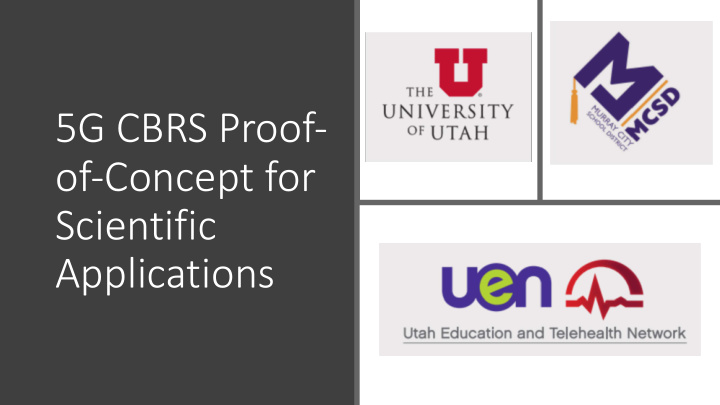



5G CBRS Proof- of-Concept for Scientific Applications
Introduction IOT Sensors CBRS Spectrum Characteristics Bandwidth Latency
Video Overview • EMBED Video into the presentation • Concept background • Robot building at MHS • Testing at MCSD • Saintcon footage • Big Finish
FCC Spectrum Allocation • 3.5 gHz Naval Radar • Used historically to land planes on aircraft carriers • Mid decade opened up for Fixed Wireless Citizens Band application Radio Service New Rules (CBRS) • Shared Spectrum Allocation • GPS requirements • Specific types of signaling – LTE standard, Cambium Networks proprietary • Central standards organization CBRS Alliance • https://www.cbrsalliance.org/about-the-cbrs- alliance/
FCC controlled database Shared Access Google Subscription Commscope Spectrum required Federated Wireless Incumbent Priority Access Prioritization Generally Available Access
LTE Bands used by CBRS
Network Diagram
Hybrid Core •Data Traffic Local Drop- EPC Core – Athonet off •Control Traffic goes to AWS CBRS LTE-A Network at 1 Model 410 indoor eNodeB – 4 Ruckus 2 Model 710 indoor Wireless Radios 1 Model 910 Outdoor SC19 Shared Access Google (managed by Spectrum Ruckus)
Station 1 – • U of U Booth
Station 2 – • U of U Booth
Station 3 - • Demo Booth
IOT Sensors • SCNET NOC • SCNET Suite • Ciena
Live View • View of Data from HPC Node in SLC
Scientific Applications IOT Sensors Video Remote control Temperature Drone Humidity Robot Pressure Gyroscope Accelerometer Magnometer
Recommend
More recommend